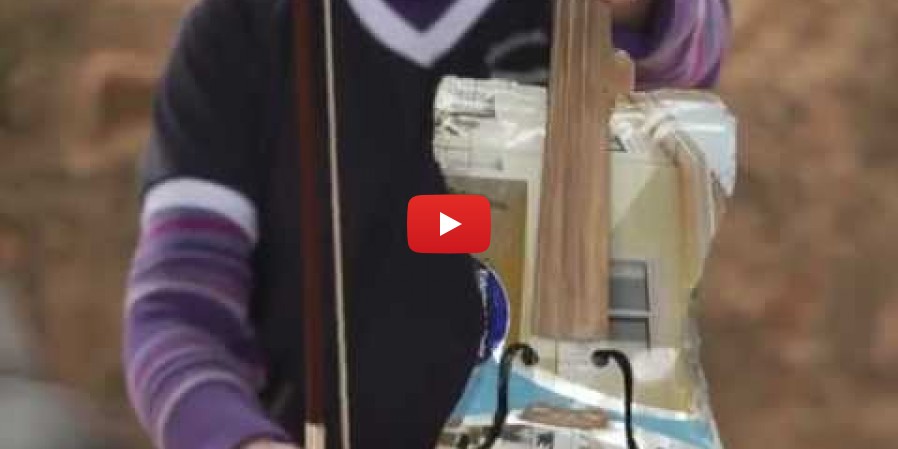Cool Facts About Cambodia

If past was filled with tragedy, present is a triumphant moment to seize the day for Cambodia. This country that once languished in the abyss of needless death and destruction under the Khmer Rouge with subsequent internal strife is finally breathing calm after it was declared as a constitutional monarchy in 1993. The picturesque country of Cambodia that is officially known as the Kingdom of Cambodia is located in the southern portion of Indochina peninsula in South East Asia. Bordered by Thailand, Laos, Vietnam, and the Gulf of Thailand, Cambodia is a beautiful landscape with uplands and mountains with a 443-kilometer (275 mi) coastline along the Gulf of Thailand. After a long regional distraught, this country is finally getting on its feet to strive for a brighter tomorrow. Home to the emblematic Angkor Wat temple, which is a silent testimony to how resourceful and artistically brilliant its people are, Cambodia still remains shrouded for the world. So let’s explore the country here by reading few interesting facts about it.
Fast Facts
Capital: Phnom Penh
Largest City:Phnom Penh
Official Language: Khmer
Demonym: Khmer or Cambodian
Religion: Buddhism, Islam, Christianity
Independence: November 9, 1953 (fromFrance)
Area: 181,035 sq. km
Population: 14,805,358 (2011 estimate)
Currency: Riel (KHR)
Interesting And Fun Facts About Cambodia
- The English word Cambodia has been derived from Cambodge, the French word.
- In 2001, Cambodia opened its first bridge across the Mekong River, linking the east and west of the country.
- The ancient temple of Angkor Wat in the deep Cambodian jungle was discovered by French explorers in the 19th century.
- The iconic ancient temple of Cambodia, the Angkor Wat was built by King Suryavarman II who reigned from 1131 to 1150 and the city of Bayonans, the Angkor Thom was built by King Jayavarman VII who ruled from 1181 to 1220.
- Angkor has been one of the biggest cradles of civilization. A team of international researchers in 2007 used satellite photographs and other modern techniques to conclude that it was the largest pre-industrial city in the world with an urban sprawl of 1,150 square miles that probably supported up to a million people.
- The word Angkor is derived from the Sanskrit word nagar for city while Wat is derived from vatthu, the Khmer form of the Pali word that means temple grounds.
- Huge reservoirs and canals were built by the Angkor kings to provide water for irrigation.
- Cambodia remained under the French occupation from 1863 to 1953.
- The infamous tyrant leader Pol Pot, who took the control of capital in 1975, was considered as the most notorious war criminals of modern times. He wanted to uproot the signs of western influence and modernization in Cambodia.
- Over one and a half million people died during the regime of the Khmer Rouge led by Pol Pot.
- UNESCO has listed Cambodia as the third most landmined country in the world as more than 4 million landmines are still strewn across the country causing high number of causalities. It is estimated that it will take a decade before all the land mines are cleared up.
- Cambodia has the highest per-capita percentage of amputees in the world. Each month there are between 300 and 700 amputations due to land-mine injuries.
- In 2005, oil and natural gas were discovered from the territorial waters of Cambodia, which is believed to augment the economy of Cambodia in coming years.
- The Cambodian flag is the only flag in the world to feature a building.
- The birth rate in Cambodia is three times higher than the death rate.
- Cambodia stands at 69th position in the world, in terms of population.
- As much as 40% more males are born each year than females, yet more females survive making up 64% of the population.
- 50 % of the Cambodian population is under the age of 15.
- Less than 120,000 customers availed the services of the Cambodia’s banks in 2003 as for every $1 deposited in the bank, more than $10 was held informally.
- Electricity in Cambodia is in pressing need as in the rural areas it is supplied in the evening only from 6:30 PM to 9:30 PM while the business establishments and hotels rely more on generators.
- In Cambodia, greeting is formally done by joining both the palms together in front of each other and then bowing. This is called Sompeah and is usually initiated by the younger or lower rank of people.
- While sitting on the floor or on a chair, it is considered to be rude to point feet, particularly the soles towards a person opposite to one. Thus, it is advisable to put them inside while conversing.
- In Khmer language, rice and food mean the same.
- Cambodia has the largest inland lake in South East Asia called the Tonle Sap.
- Interestingly, in north east of Cambodia, dolphins can be found in rivers.
- Cambodia is the only country that purportedly has the least Chinese influences among all the other Mainland Southeast Asian nations.
- Till date, Cambodia is the only Asian country to have a king who is partly of French descent.
- Tarantula kebabs are a popular delicacy in Cambodia.
- The rate of deforestation in Cambodia is one of the highest in the world. In 1969, the country’s primary rainforest cover was 70% that dropped by just 3.1% in 2007.
- The second largest city of Cambodia is Battambang that is located beside the river Sangker.
- Cambodia’s motto is “Nation, Religion, King”.
- The official religion of Cambodia is Theravada Buddhism which is practiced by around 95% of the Cambodian population.
- Hun Sen, the head of government of Cambodia, is the longest serving leader in South East Asia and has ruled Cambodia for over 25 years.
- The Bonn Om Teuk or water festival is celebrated in November at the end of monsoon, when the Mekong River recedes and the popular sport rowing race is also held during the same festival season.
- Traditional boat racing, buffalo racing, Pradal Serey, Khmer traditional wrestling, and Bokator are the local sports of Cambodia.
- Football, introduced by French, is one of the most popular sports in Cambodia but other sports, such as; volleyball, bodybuilding, field hockey, rugby union, golf, and baseball are also gaining interest here.
- Rice is ubiquitous in Cambodian meals and delicacies. It is served in many forms that include fried, steamed, or in the form of noodles. It is even consumed as dessert by mixing it with fruits and coconut milk that give it a sweet taste.
- Fish is also consumed in varied forms like, fresh fish, dried fish, smoked fish, or as a paste called Prahok that is mixed with spice like hot peppers, lemon grass or mint.
- Garment export and tourism are two of the main industries that generate revenue for the economy of Cambodia.
- The major export products of Cambodia are rice, timer, fish, garments, and rubber.









